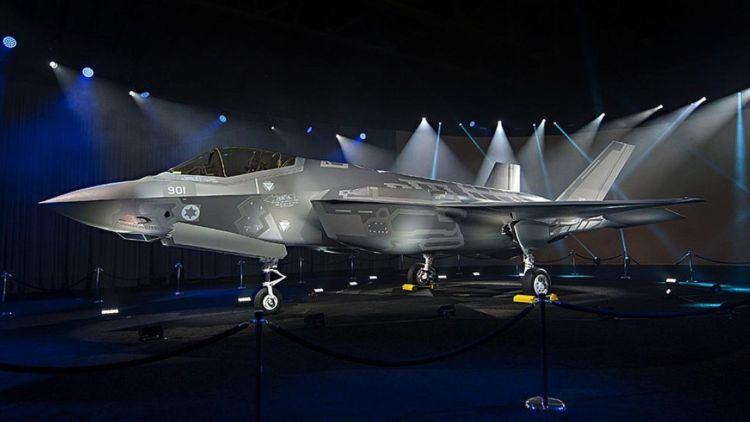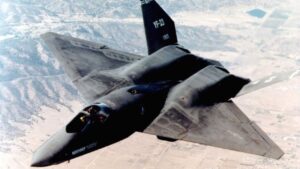Cameron Curtis has recently posted numerous articles on radar and electronic warfare. They are all on SOFREP and will be linked where appropriate. The interesting thing about current events is that the conflicts in Ukraine, and especially the Middle East, showcase the technology under combat conditions. The recent Israeli attack on Iran on the night of October 25/26 is particularly interesting because Israeli F-35i Adirs encountered particularly sophisticated threat radars. This will be discussed in the article that follows. I emphasize that some of the information is anecdotal, from Israeli sources, but it conforms very well with what we know of the technology and the events of the night. -ED
The Attack
Analysts have been puzzled by the limited nature of Israel’s October 25/26 attack on Iran. Various theories have been presented. Certainly, the NSA intelligence leak of October 17 had an effect, forcing the Israelis to initially cancel the attack. They then proceeded with an alternative plan.
Now, anecdotal information from Israeli sources suggests that the F-35s flying fighter escort for the strike package found themselves locked by engagement radars over Iraqi airspace. That means the Russians and Iranians could have shot them down at long range. It might have been several hundred miles, at the edge of the capability of ROCKS ALBMs that Israel meant to use on the enemy radar sites. This was a shock to the Israelis. According to this theory, the Israelis were so unnerved that they launched their missiles, turned around, and went home.
It also accounts for the sober expressions Netanyahu and Gallant wore in the Israeli command bunker. The senior Israeli officers around the table were wringing their hands and biting their nails.
This writer has written about the Anti-Stealth kill chain. Is the F-35 still untouchable? It’s well known that, like WW II Radars, Russian long wave radars can detect all modern stealth aircraft at long ranges. The success of air defense, however, depends on the system’s ability to hand off the contact from low-discrimination long-wave radar to high-discrimination engagement radars. The Americans and Israelis did not think the Russians and Iranians could close the kill chain. They thought wrong.
Back in April, the Russians and Iranians mapped the entire Israeli and coalition air defense network (see Iran’s drone strategy to map Israeli air defense), paving the way for Iran’s successful October 1 missile swarm attack. Rest assured the Israelis and Americans, who are no slouches, collected data on the Russians and Iranians on October 25/26. They are now going through that data with a fine-tooth comb, analyzing the Russian and Iranian capabilities.
The point is, the Israelis were locked by engagement radar they had not encountered in the past.
Electronic Warfare
Radars detect enemy aircraft by sending out pulses of microwave energy. When those pulses encounter aircraft, they bounce back. The time taken for the pulse to travel out and back, combined with the angle and directionality of the pulse, allows the radar to compute the aircraft’s direction, distance, altitude and speed.
Cameron Curtis has recently posted numerous articles on radar and electronic warfare. They are all on SOFREP and will be linked where appropriate. The interesting thing about current events is that the conflicts in Ukraine, and especially the Middle East, showcase the technology under combat conditions. The recent Israeli attack on Iran on the night of October 25/26 is particularly interesting because Israeli F-35i Adirs encountered particularly sophisticated threat radars. This will be discussed in the article that follows. I emphasize that some of the information is anecdotal, from Israeli sources, but it conforms very well with what we know of the technology and the events of the night. -ED
The Attack
Analysts have been puzzled by the limited nature of Israel’s October 25/26 attack on Iran. Various theories have been presented. Certainly, the NSA intelligence leak of October 17 had an effect, forcing the Israelis to initially cancel the attack. They then proceeded with an alternative plan.
Now, anecdotal information from Israeli sources suggests that the F-35s flying fighter escort for the strike package found themselves locked by engagement radars over Iraqi airspace. That means the Russians and Iranians could have shot them down at long range. It might have been several hundred miles, at the edge of the capability of ROCKS ALBMs that Israel meant to use on the enemy radar sites. This was a shock to the Israelis. According to this theory, the Israelis were so unnerved that they launched their missiles, turned around, and went home.
It also accounts for the sober expressions Netanyahu and Gallant wore in the Israeli command bunker. The senior Israeli officers around the table were wringing their hands and biting their nails.
This writer has written about the Anti-Stealth kill chain. Is the F-35 still untouchable? It’s well known that, like WW II Radars, Russian long wave radars can detect all modern stealth aircraft at long ranges. The success of air defense, however, depends on the system’s ability to hand off the contact from low-discrimination long-wave radar to high-discrimination engagement radars. The Americans and Israelis did not think the Russians and Iranians could close the kill chain. They thought wrong.
Back in April, the Russians and Iranians mapped the entire Israeli and coalition air defense network (see Iran’s drone strategy to map Israeli air defense), paving the way for Iran’s successful October 1 missile swarm attack. Rest assured the Israelis and Americans, who are no slouches, collected data on the Russians and Iranians on October 25/26. They are now going through that data with a fine-tooth comb, analyzing the Russian and Iranian capabilities.
The point is, the Israelis were locked by engagement radar they had not encountered in the past.
Electronic Warfare
Radars detect enemy aircraft by sending out pulses of microwave energy. When those pulses encounter aircraft, they bounce back. The time taken for the pulse to travel out and back, combined with the angle and directionality of the pulse, allows the radar to compute the aircraft’s direction, distance, altitude and speed.
As discussed in previous articles there are all kinds of radars out there. The world around the F-35 sounds like an orchestra, with dozens of instruments playing different tunes. The question is, can we identify the instruments playing the tunes, and can we classify them as benign or threats?
So. All around the F-35, positioned at key points on the airframe, are antennae. These scoop up all the microwave radiation in the environment. That data is organized and displayed by two devices. There is a Radar Warning Receiver (RWR) and an Electronic Support Measure System (ESMS). The F-35’s antennae gather the electromagnetic data from all the radars in the environment, compare them to the system database, label them, and display them on the RWR screen.
Figure 2 shows the F-35’s RWR and ESMS configuration. Notice the different antennae located at different points around the aircraft. The antenna are dedicated to pick up electromagnetic radiation across different bands of the spectrum.

The RWR is just a small square screen that shows the different radars picked up by the aircraft sensors. The contacts are identified by labels of different shapes. Figure 3 is an example of what an RWR might display (it is not an actual F-35 RWR).

You can see the RWR displays two S-300s AD systems, a BUK AD system, a Russian A-50 AWACS, and a MIG-29.
How do we know what symbol to display? There is a threat database back home, and the EW techs program the F-35’s RWR system before the mission with all the threats it is likely to encounter in theatre. We have a database; the Russians and Iranians have their own. So when the Israelis lit up their whole air defense network in April, the Russians and Iranians collected all that data, loaded up their database, and off they went.
It’s all networked. So if the F-35 encounters a threat not found in the onboard database, the data is sent home and compared to the larger database. The F-35’s onboard database can be updated with uploaded data while in flight. That takes a little longer. All these contacts are geolocated. So they know – Syria, Jordan, Turkiye, Iraq, Iran and so on.
The Israeli F-35s overflew Jordan and the RWR posted little symbols on the RWR screen. There’s a Jordanian acquisition radar there, S-band. There’s a Russian acquisition radar in Syria, VHF. And so on.
Suppose the contact is a “scanning emitter.” The radar sweeps the sky. It’s sending out pulses of a certain power level. So the antennae pick up the radar’s pulses and we measure their strength. Over there to the left, they’re weak. Then they get close, and they peak in power as they pass over the F-35’s sensors. Then they get weaker as they pass by and move away to the right. The radar is sweeping the F-35. It’s like a searchlight moving back and forth over the night sky, looking for airplanes.
The pilot feels comfortable. He’s stealthy, right? He’s got a structurally stealthy aircraft, it’s got a distinctive stealthy shape, and it’s covered with radar-absorbent coatings. Life is good. The radar is in search mode, he knows it’s Jordanian, Russian from Syria, or Iraqi or whatever.
Suddenly the RWR indicates it has detected a powerful radar that is not sweeping. The searchlight is no longer moving back and forth over the night sky. It is laser-focused on the F-35 and is following it. It’s not scanning, it’s staring. And that’s a wicked kind of stare. The Israeli Adirs probably encountered that kind of contact. Powerful engagement radars locked onto their aircraft. Able to discriminate between several Adirs and track them independently.The RWR indicated that they were being tracked and they were vulnerable. That was bad enough, but the radar locking them was of a type not in their database. “Unidentified X-Band engagement radar.” The ESMS converses with the command unit on the ground and it is not in their database either. The threat is geolocated to Iran.
Understand how that feels to the F-35 pilot. He’s supposed to be stealthy. This isn’t supposed to happen. Especially this far from his target.
S-300 and S-400 radars are in the ESMS database. Flanker and Felon radars are in the database. This unknown radar is not in the database. They have no idea what it is, or what weapons system it is associated with.
And that’s it. If you are tracking an aircraft, you can kill it.
On previous missions, the Israelis had fired their ALBMs over Iraq. The F-35i Adirs were within the 250 mile range of the 40N6E long-range missiles of the Russian S-400 system. And they didn’t know what weapon systems were being cued by the unknown radar. It could be an altogether new system with unknown capabilities.
The Israelis had enough of that. They launched their missiles, turned around, and went home.
There was no second wave.
Conclusion
The F-35 is not that stealthy in a modern threat environment. And the Israeli F-35i Adir has its vulnerabilities. Presumably, the Adir was ordered with an Israeli proprietary jamming and electronic warfare system. Those goodies were reportedly tailored specifically to counter Iranian threats. Didn’t help the night of October 25/26.
It is likely the entire strike package was detected by Russian and Iranian radars when they took off from Israel. Russian long-wave radars identified the F-35i Adirs, followed them as a group, and cued their presence to the powerful new engagement radars. The unknown engagement radars discriminated F-35i targets and locked them. That was the handshake that closed the kill chain.
There’s nothing particularly special about each piece in isolation. Long-wave radars have been around since WW II. The engagement radar is new, but once studied will probably not spring many surprises. It will be interesting to compare its capabilities to our best radars. What is critical is the networking between the two. We also need to know if the Russians have supplied Iran with S-400 missiles with ranges in excess of 250 miles.
Consider this. The US has been flying over Syria for years. What does it fly over Syria? F-35s and F-22s. At one time, it publicly announced it was moving F-22s into the theatre. Who else is in the Syrian theatre? Israelis, Russians and Iranians. The Russians have all kinds of radars across a broader spectrum of wavelengths than we do. And they have A-50 AWACs and other EW aircraft.

We can’t assume our platforms are a big secret to the opposition. The Russians and Iranians are intimately familiar with the signatures of the F-22 and F-35. You can bet on it. Both American and Israeli F-35s. Because they have been collecting data on them for years. No need to mention the Israelis’ F-16i and F-15i attack aircraft. The Adir frequency hops? The Russian systems either map the pattern of frequency hopping or are able to blast out so much energy they cover the whole range over which the Adir hops. If you have enough energy, that’s how you jam a frequency hopper. What has that kind of energy? The Russian Murmansk system provided to Iran a few months ago. Refer to this article: Iran deploys Russian Murmansk BN electronic warfare system to counter Israeli F-35i Adir..
Such systems are so powerful they can cause damage to the electronic systems of their targets. Several years ago, a Danish destroyer ventured too close to the Crimean coast and was engaged with electronic warfare radiation so intense that the destroyer’s systems were physically damaged. They were literally fried. The destroyer had to return to port for a complete electronic overhaul.
Russia provided Iran the Murmansk BN electronic warfare system with a range of 5,000 miles, specifically to muck up the Israelis’ F-35i Adir. Imagine the amount of power it takes to blast microwave energy out to 5,000 miles. And the Israeli strike package on October 25/26 was probably engaged at 150 to 500 miles. Go ahead and frequency hop. The Murmansk BN didn’t have to stretch. This video reports on the Murmansk BN: Murmansk BN with 5,000 mile range.
The Russians and Iranians have been developing technology and tactics to defeat Israeli platforms for years. They’ve been tightening the links in their air defense kill chain.
The US and Israel have long considered the Israelis to be the dominant air force in the region. They’re behind the eight-ball now, because Iranian missile swarms can penetrate their air defense, and they can’t penetrate Iran’s.
Of course, this is a game of measure and counter-measure. The Israelis are pretty damn good, and they are working right now to figure out what to do about this new threat. They could come up with a solution tomorrow. But until they can penetrate Iran’s air defense, any attack will be a risk.
What this teaches us is that structural stealth will soon be passé. It’s not useless. There will always be value in reducing an aircraft’s radar cross section. But that’s no longer enough. We need to turn to digital stealth.
Digital sleight of hand will be the subject of a future article.
About the Author

You may reach Cameron at: [email protected]
Cameron Curtis has spent thirty years in the financial markets as a trader and risk manager. He was on the trade floor when Saddam’s tanks rolled into Kuwait, when the air wars opened over Baghdad and Belgrade, and when the financial crisis swallowed the world. He’s studied military affairs and warfare all his adult life. His popular Breed series of military adventure thrillers are admired for combining deep expertise with propulsive action. The premises are realistic, the stories adrenaline-fuelled and emotionally engaging.
Check out the books here: Cameron Curtis’s Amazon Page

**Editor’s Note: The Christmas season is barreling down upon us at a high rate of speed. For this year’s holiday giving, I recommend the gift of BREED. –GDM



